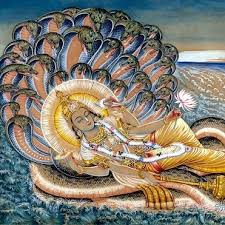The performance of the last rites is a dutiful service to the deceased in all societies of the world. In the Sanatana Vedic Dharma, the last rites go beyond funeral (अन्त्येष्टि/antyeSTI) and memorial service (the 13th day propitiatory rite of…
( 25 September 2021 to 29 September 2021) From Panchami to Ashtami of the pitR-pakSa, Shraddha rituals are carried out on eighteen vedis or platforms for ancestral worship inside Vishnupada Mandir. 16 vedis are located within the colonnade called the…
Part I ( 20 September 2021 to 24 September 2021) Gaya is a sacred place located in the ancient region of Magadh which is also one of the administrative divisions of the present day Bihar. There is literary evidence in…
Article by Dr. Paresh Saxena What is ShrAddha? Ancestral worship (पितृ पूजा/pitR pUjA) in the Sanatana Vedic Dharma is often referred to as ShrAddha (श्राद्ध in Devanagari/ zrAddha in Harvard-Kyoto), translated in English as something ‘being truthfully done.’ The word…
The 10-day long festival of Ganesh Chaturthi comes to an end today. Devotees bid farewell to Lord Ganesha and immerse the idols in water bodies. For the first time in decades, the idols of Lord Ganesha are being immersed on…
On the 14th of the bright half of Bhadrapada is observed the vow of Ananta Chaturdashi. It is an individual puja and not a festival of a socio-religious character, and perhaps for this reason and due to the impact of…
The Bhagavata Purana declares: On the day of Shravana-dvadashi [the twelfth day of the bright fortnight in the month of Bhadrapada], when the moon came into the lunar mansion Shravaṇa (Aquila) at the auspicious moment of Abhijit muhurta (around mid-day), the Lord appeared in this universe. Considering the Lord’s appearance very auspicious, all the stars and planets, etc. were munificently charitable.
The origins of the myth of Vamana incarnation of Lord Vishnu lie in several Rchas of the RgVeda where Vishnu has been equated with the Sun traversing the three realms of the Earth, the sky and the intervening celestial space and dispelling the darkness through the course of his celestial journey.
Lord Vishwakarma is the divine craftsman, architect and engineer who created the universe, earth and heaven. He is also known for creating weapons including the ‘Vajra’, the sacred weapon of Lord Indra.
Vishvakarma is regarded as the architect among gods in the Sanatana Vedic pantheon. He exists in the Vedas as a solar deity and later came to be regarded as the Prajapati, the creator, in the Brahmanas. Vishvakarma obtained the status of the ‘divine architect and the divine armourer’ in the Epics and the Puranas. In the much debated Varna system, the descent of various castes indulging in craftsmanship is believed to be the progeny of Vishvakarma.









